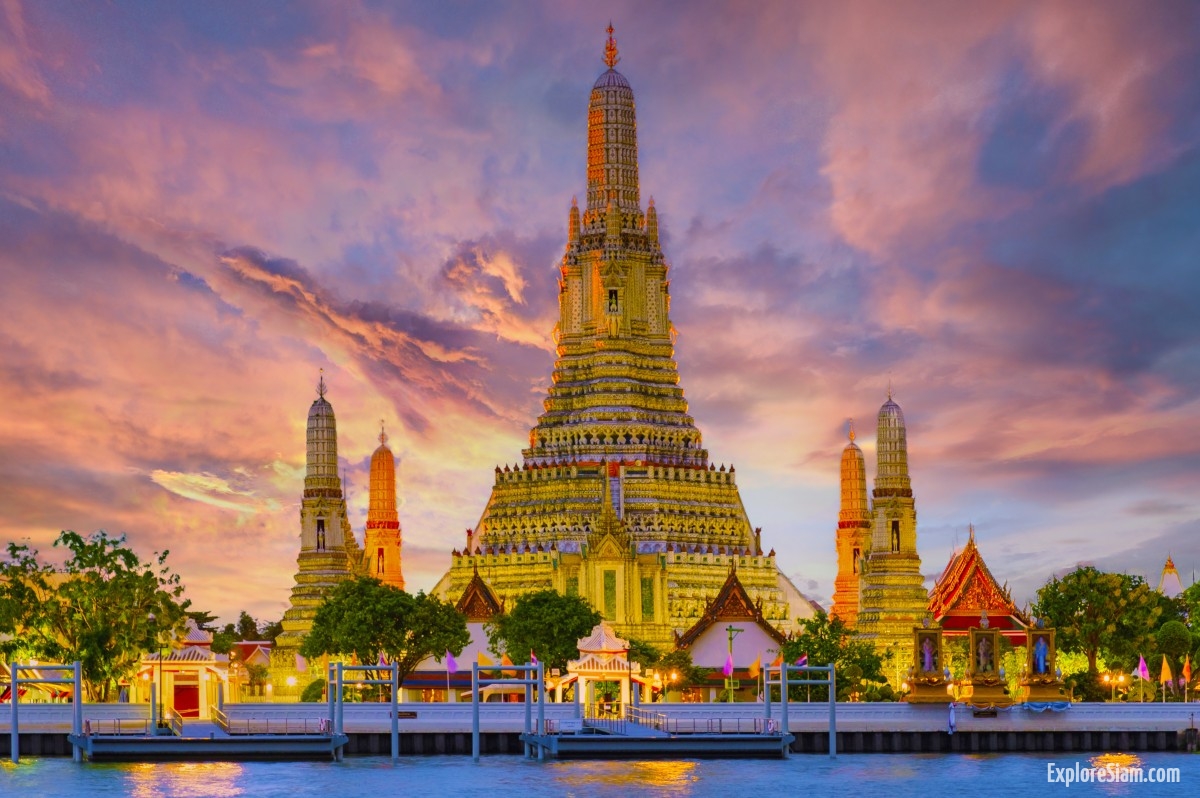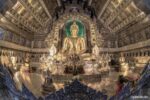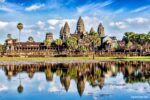Nestled along the western banks of the Chao Phraya River, Wat Arun stands as a beacon of Thailand’s rich cultural heritage and architectural grandeur. Known as the Temple of Dawn, Wat Arun is one of Bangkok’s most revered landmarks, drawing visitors from around the world who are captivated by its intricate design and historical significance.
Wat Arun, officially named Wat Arun Ratchawararam Ratchawaramahawihan, dates back to the Ayutthaya period but gained prominence during the Thonburi era under King Taksin. The temple was initially known as Wat Makok before being renamed Wat Chaeng. It was King Rama II who initiated the restoration and enlargement of the central prang (spire), a task completed by King Rama III. The temple’s current name, Wat Arun, is derived from the Hindu god Aruna, often personified as the radiations of the rising sun.
One of the most striking features of Wat Arun is its central prang, which soars to a height of approximately 70 meters. This towering spire, adorned with colorful porcelain and seashells, is a testament to the exquisite craftsmanship of Thai artisans. The central prang is surrounded by four smaller prangs, each dedicated to Phra Phai, the god of the wind. These spires are decorated with intricate floral patterns made from broken porcelain, a unique form of decoration that gives the temple its distinctive and vibrant appearance.
Visitors to Wat Arun are often mesmerized by the temple’s stunning exterior, especially during sunrise and sunset. The first light of dawn casts a magical glow on the temple, while the setting sun bathes it in a warm, golden hue. At night, Wat Arun is illuminated, its prangs standing majestically against the dark sky, creating a picture-perfect scene that is a favorite among photographers.
The temple’s architectural design is deeply symbolic. The central prang represents Mount Meru, the center of the universe in Buddhist cosmology. The surrounding smaller prangs symbolize the four directions, each guarded by mythical giants called Yaksha. As visitors ascend the steep steps of the central prang, they are greeted by a panoramic view of the Chao Phraya River and the sprawling cityscape of Bangkok, offering a moment of reflection and awe.
Beyond its architectural splendor, Wat Arun holds great religious significance. The temple is a place of worship and meditation, with numerous Buddha statues and shrines scattered throughout its grounds. The ordination hall, or ubosot, houses a revered image of the Buddha, designed by King Rama II. This sacred space, adorned with murals depicting the life of the Buddha, is a tranquil sanctuary for monks and visitors alike.
Wat Arun also plays a vital role in various cultural and religious ceremonies. During the annual Kathina festival, Buddhists present new robes to the monks, a tradition that fosters a sense of community and spiritual renewal. The temple is also a focal point during the Royal Barge Procession, a spectacular event that sees ornately decorated barges glide along the Chao Phraya River, paying homage to the Chakri dynasty.
In addition to its religious and cultural significance, Wat Arun is a symbol of resilience and continuity. The temple has withstood the test of time, surviving wars, natural disasters, and the relentless march of modernization. Its enduring presence serves as a reminder of Thailand’s rich history and the enduring legacy of its people.
For those planning a visit to Wat Arun, it is recommended to allocate ample time to fully appreciate its beauty and serenity. The temple can be reached by ferry from the Tha Tien Pier, located near the Grand Palace. A leisurely stroll through its grounds, followed by a climb to the top of the central prang, offers a rewarding experience that captures the essence of Bangkok’s spiritual and cultural heart.
In conclusion, Wat Arun is more than just a temple; it is a symbol of Thailand’s artistic heritage, religious devotion, and historical resilience. Its majestic spires, adorned with intricate details, stand as a testament to the skill and creativity of Thai artisans. As one of Bangkok’s most iconic landmarks, Wat Arun continues to inspire awe and reverence, inviting visitors to explore its rich tapestry of history, culture, and spirituality. Whether viewed at dawn, dusk, or under the night sky, the Temple of Dawn remains a radiant jewel in the crown of Thailand’s architectural marvels.





